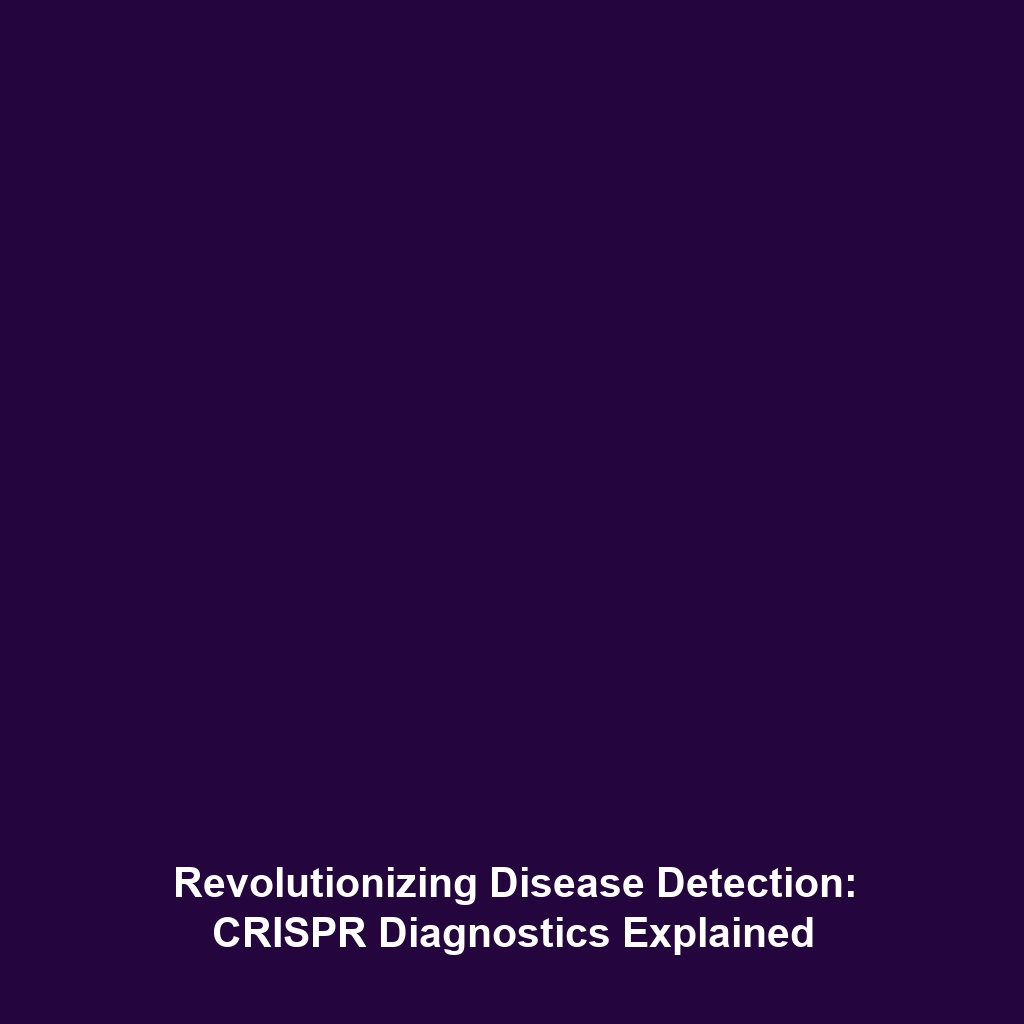CRISPR-based Diagnostics for Rapid Detection of Infections
Introduction
CRISPR-based diagnostics revolutionize the field of infection detection by providing rapid and accurate methods to identify pathogens. Technologies like SHERLOCK and DETECTR utilize CRISPR gene editing principles to enable swift diagnosis during outbreaks. As we navigate through a world increasingly impacted by infectious diseases, the significance of these tools cannot be overstated. They promise not only to streamline testing but also to enhance our response to global health threats. With the integration of CRISPR gene editing into diagnostic methodologies, we stand on the cusp of a new era in medical science.
Key Concepts
Understanding CRISPR-based Diagnostics
CRISPR, an acronym for Clustered Regularly Interspaced Short Palindromic Repeats, is known for its gene-editing capabilities; however, its application extends into diagnostics through innovative technologies like SHERLOCK (Specific High-sensitivity Enzymatic Reporter unLOCKing) and DETECTR. These methods capitalize on the inherent advantages of CRISPR, including precision and versatility.
Principles of SHERLOCK and DETECTR
Both SHERLOCK and DETECTR employ CRISPR-associated proteins (such as Cas proteins) to detect specific nucleic acid sequences. Here are key principles:
- Target Amplification: Each method amplifies nucleic acids from pathogens to enhance detection sensitivity.
- Signal Readout: SHERLOCK provides a fluorescent readout, while DETECTR utilizes a lateral flow system akin to pregnancy tests, allowing for user-friendly applications.
Applications and Real-World Uses
The impact of CRISPR-based diagnostics extends into various realms of healthcare, notably:
- Rapid Identification: Both SHERLOCK and DETECTR are employed in clinical labs for quick assessment of viral and bacterial infections, significantly reducing turnaround times.
- Point-of-Care Testing: These technologies enable immediate testing in remote settings, making infectious disease management more accessible in resource-limited environments.
- Outbreak Response: The rapid diagnostics capabilities allow for quick responses to outbreaks, facilitating timely public health interventions.
Current Challenges
Despite their promising potential, CRISPR-based diagnostics face several challenges:
- Regulatory Hurdles: Navigating the regulatory landscape for approval can be complex and time-consuming.
- Technical Limitations: Ensuring consistent sensitivity and specificity can be difficult, particularly when dealing with low viral RNA loads.
- Implementation Barriers: Access to necessary infrastructure and trained personnel may hinder the widespread adoption of these technologies.
Future Research and Innovations
The future of CRISPR-based diagnostics is poised for exciting developments, with research focusing on:
- Integration with AI: Next-generation CRISPR diagnostic tools may incorporate artificial intelligence for improved analysis and predictive capabilities.
- Multiplexing: Innovative methods will likely allow for the simultaneous detection of multiple pathogens in a single test.
- Portability: Future designs aim to create portable devices, enhancing usability in field settings.
Conclusion
In summary, CRISPR-based diagnostics, particularly SHERLOCK and DETECTR, represent a significant advancement in the rapid detection of infections within the broader context of CRISPR gene editing. Their applications promise to enhance diagnostics and improve public health responses to infectious diseases. Continued research and innovation in this field are paramount to overcoming existing challenges and harnessing the full potential of these technologies. For further exploration of CRISPR technologies, visit our related articles section.

